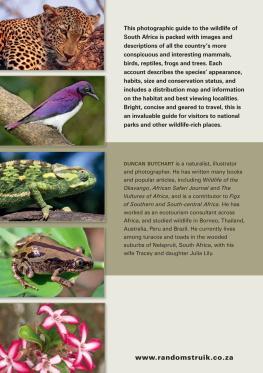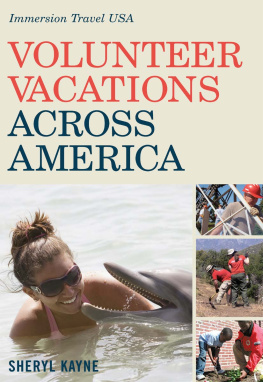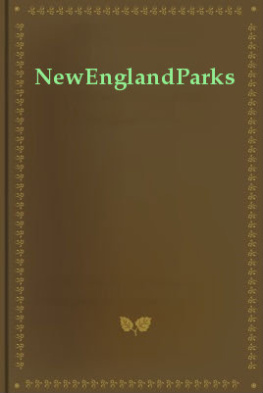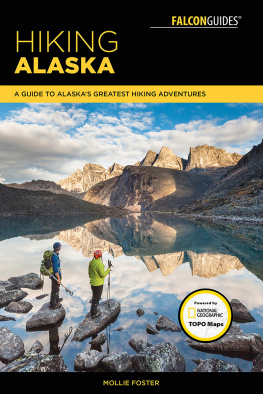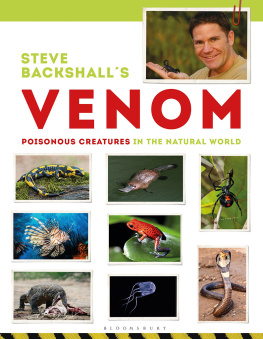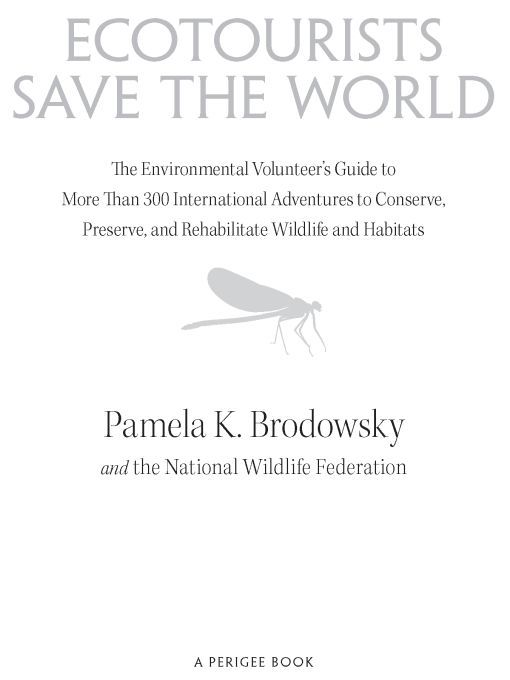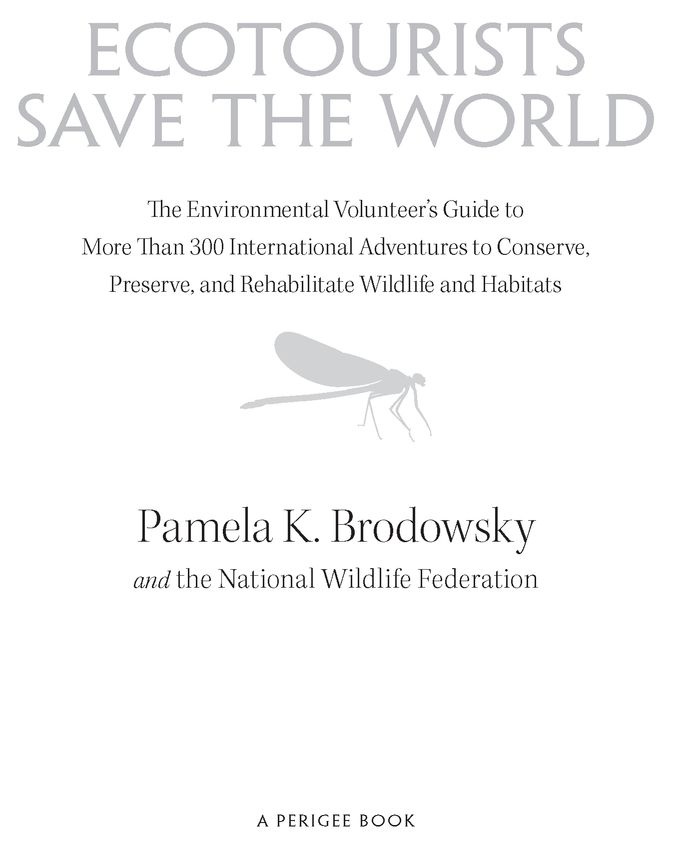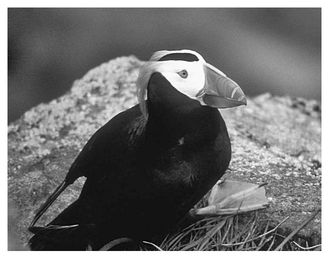Table of Contents
A sincere thank-you to all who donate their time and energy to
our worlds wildlife and the habitats in which they live.
ACKNOWLEDGMENTS
With our deepest gratitude we would like to thank the entire group at Perigee for their contributions, time, and efforts, which have clearly made this book possible. A very special thank-you goes to our publisher John Duff; associate editor Jeanette Shaw ; editorial intern Brian Sweeney; senior designer Tiffany Estreicher; copyeditor Candace Levy; and associate art director Benjamin Gibson for the cover design.
INTRODUCTION
Did you know... one in three amphibians, nearly half of all turtles and tortoises, one in four mammals, one in five sharks and rays, and one in eight bird species are now considered at risk of extinction? Habitat destruction, exploitation, pollution, and climate change are taking their toll on our worlds species and the places that they inhabit.
On a lighter note, its not too late. There is still time to save the majority of species if conservation organizations and eco-concerned individuals pull together and commit to lending a hand to wildlife and habitats in need.
Ecotourists Save the World is a book for every conservation-minded citizen, ecoadventurer, or wildlife enthusiastan international travel guide to more than 300 volunteer opportunities that work to make a difference in the lives of our worlds wildlife and help preserve the habitats in which they live.
From assisting scientists with a study of the affects of climate change and habitat loss of the mammals of Nova Scotia to hand-feeding orphaned lion cubs in a rescue sanctuary in Africa, tracking the wild elephant herds in Asia, and restoring the lost rain forests of Costa Rica, there is a hands-on experience for everyone willing to give back. Ecotourists Save the World pays particular attention to opportunities that can make a difference for our species, our planet, and ultimately future generations.
THINGS YOU SHOULD KNOW
This guide is arranged generally by continent. In some instancesfor example, Australiawe have included territories that, while not technically part of that continent, fit quite naturally into the geographical region. The listings for each continent are then arranged alphabetically by site name or, as in larger territories such as the United States, arranged alphabetically first by state and second by site name. In addition to the project description, each listing contains information on the point of contact, location, volunteer category, cost, dates and duration, how to apply, and field notes.
CONTACT. Gives direct contact information, such as address, telephone numbers, website, and email addresses.
LOCATION. In most instances, lists the specific location of the volunteer position. In cases in which the volunteer position is remote, lists the rendezvous point at which you will meet with your volunteer team and project coordinator.
CATEGORY. States the specific volunteer category, such as conservation, preservation, or rehabilitation.
COST. Provides an approximate estimate of what it costs to participate in the volunteer opportunity for the selected program length. This section also includes provisions made by the sponsor for such things as housing and training.
DATES & DURATION. Provides specific time frames for open positions.
TO APPLY. Supplies information on the best way to initiate contact for application to open positions.
FIELD NOTES. Provides useful information regarding the volunteer position, including whether the project is suitable for families, groups, and/or solo travelers; any age restrictions; special skills or other requirements needed to participate; cautions or warnings for safety and comfort; and, in some instances, recommendations for local sites to visit and activities to enjoy while in service.
NOTES FOR AMERICANS TRAVELING ABROAD
The US government encourages travelers to register with the Department of State. This is a precautionary measure taken in the event of an emergency in the United States or in the country you are visiting so that you can be contacted if needed. Registration is a free service and is easily accomplished online at https://travelregistration.state.gov.
Many countries have restrictions on what may be imported. It is best to check with the embassies of your destination countries concerning their lists of prohibited items. A listing of foreign embassies and consulates is available online at http://state.gov/s/cpr/rls/dpl/32122.htm.
General guidance on required entrance vaccinations and other health-related precautions in regard to visiting foreign countries can be found at the Centers for Disease Control and Preventions website, www.cdc.gov/travel/default.aspx.
All international travel now requires a passport. For information on applying for a US passport, visit www.travel.state.gov/passport/passport_1738.html, or pick up an application form at your local post office or library.
NORTH AMERICA
United States, Canada, Mexico, Bahamas, US Virgin Islands
ALASKA MARITIME NATIONAL WILDLIFE REFUGE
ALASKA, USA
Home to an incredible diversity of seabirds, including the tufted puffin, the cackling goose, and the whiskered auklet, the Alaska Maritime National Wildlife Refuge also offers visitors the chance to see an amazing, endangered mammal in the wildthe Steller sea lion. Volunteers help park staff survey the local fish and other wildlife, conduct tours, educate school groups and visitors, and maintain the refuges hiking trails. Lucky participants may even help with special projects, working to remove invasive plant species from park grounds or banding birds.
CONTACT: Alaska Maritime National Wildlife Refuge, 95 Sterling Hwy, Suite 1 MS 505, Homer, AK 99603; Tel: 9072356546; Fax: 9072357783; Web: alaskamaritime .fws.gov; Email: alaskamaritime@fws.gov.
LOCATION: Homer, AK.
CATEGORY: Conservation.
COST: Free in exchange for service. Volunteers receive a small stipend, and RV pads with full hookups are provided.
DATES & DURATION: Spring through summer ; 12-24 weeks; April to July or June to September. To qualify, participants must commit to a 32-hour workweek.
TO APPLY: Applications can be obtained by contacting the refuge office (see Contact) or by visiting the US Fish and Wildlife Service at www.fws.gov/volunteers.
FIELD NOTES: Both full- and part-time positions are available. Families, groups, and solo travelers are welcome. Participants should be aware that volunteer duties may change to meet the reserves current needs and goals.


